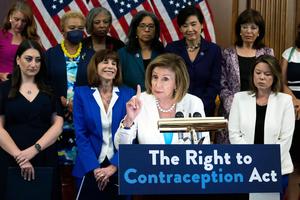Abortion Confusion Needs Greater Wisdom, Not More Abortion
COMMENTARY: The ethics and legality of elective abortion are completely different than that of treating pregnancy complications.

The U.S. Supreme Court’s decision in Dobbs v. Jackson Women’s Health brought widespread confusion about whether women would be able to receive medical treatment to save their lives or prevent grave harm from severe complications during pregnancy. There should have been no confusion. Today, 93% of OB-GYNs give excellent care without performing elective abortions. But there was confusion, which pointed to the need for education, not more access to elective abortion.
The ethics and legality of elective abortion are completely different than that of treating pregnancy complications, even if elective abortion sometimes uses the same medical procedures as true medical treatment. The Supreme Court’s ruling now allows states to limit or ban elective abortion but does not impact good management of severe complications in pregnancy.
Here is the difference: In an elective abortion, a doctor tries to end the life of a child for reasons that are social, not medical. By contrast, in the medical management of pregnancy, the doctor tries to resolve a pathological condition so that the mother can give birth to the child. If the complications threaten the mother or child with grave harm or death, the doctor may ethically separate the child from its mother before childbirth. If the unborn child is older than 22 weeks, the doctor will try to save both, but, unfortunately, younger children cannot survive the needed separation. Medically indicated separations try to save the life of both mother and child if possible, but if not, at least to save the life of the mother.
Doctors recognize the radical difference between the ethics of elective abortion and of medical procedures that save the mother from death or grave harm but cannot save the child. At least since the time of the ancient Greeks, a basic tenet of professionalism expressly forbids a physician from intentionally ending the life of another human being, adult or child, and thus expressly forbids elective abortion. When Roe v. Wade imposed elective abortion on the medical profession, it naturally ignited the legal controversies that Dobbs has now redirected to the states.
Although doctors recognize the difference between elective abortion and the medical management of pregnancy, 50 years of Roe-shaped medicine have so debased standards of care that the Dobbs decision confused even some doctors.
The widespread practice of elective abortion after Roe has influenced some doctors to resort too quickly to procedures that end the life of the child without exhausting other options that would allow both mother and child to live. Life-ending procedures should be a last resort, but doctors working in a culture shaped by elective abortion may too easily overlook the life of the second patient, the child in the womb. In such cases, doctors are not performing elective abortions, but neither do they meet the ethical standard that truly serves pregnant mothers, who want doctors to respect their children’s dignity even when medical procedures cannot save their children’s lives.
When a person’s life is threatened with mortal danger, we feel a terrible sense of urgency. This impulse to save lives motivates doctors to perform medical procedures that will save the mother’s life despite the regrettable loss of her wanted child.
But the same impulse should lead medical professionals to greater respect for the dignity of the child in the womb who cannot be saved, whom few will see, and who will not be able to grow and develop typical human relationships.
There are pro-life doctors who have been practicing medicine for the past five decades with a deep respect for the dignity of the child in the womb from its earliest stages of development. They do not perform or refer for elective abortions. When their patients experience severe complications in pregnancy, they minimize risks to the child in the womb as well as the mother, and only as a last resort do they use procedures that the child cannot survive.
These high standards of care, which pro-life doctors maintained under Roe, should set the standards that states adopt under Dobbs.
Grattan Brown is a Catholic theologian, professor and ethicist.
- Keywords:
- roe v. wade
- health care
- abortion
- Dobbs v. Jackson Women’s Health Organization
- u.s. supreme court













